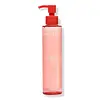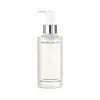What's inside
What's inside
 Key Ingredients
Key Ingredients

 Benefits
Benefits

 Concerns
Concerns

No concerns
 Ingredients Side-by-side
Ingredients Side-by-side

Cetyl Ethylhexanoate
EmollientPolyglyceryl-5 Dioleate
EmulsifyingGlycerin
HumectantHydrogenated Polydecene
EmollientSorbitol
HumectantWater
Skin ConditioningPentaerythrityl Tetraisostearate
EmollientPolyglyceryl-5 Oleate
EmulsifyingPolyglyceryl-6 Caprylate
EmulsifyingHelianthus Annuus Seed Oil
EmollientVitis Vinifera Seed Oil
EmollientCamellia Sinensis Seed Oil
HumectantZingiber Officinale Root Extract
MaskingAnanas Sativus Fruit Extract
Skin ConditioningCentella Asiatica Extract
CleansingLactobacillus/Papaya Fruit Ferment Extract
AbrasiveCalendula Officinalis Flower Extract
MaskingGlycyrrhiza Glabra Root Extract
BleachingCaprylyl Glycol
EmollientCitrus Junos Fruit Extract
Skin ConditioningChamomilla Recutita Flower Extract
MaskingCaprylhydroxamic Acid
Butylene Glycol
Humectant1,2-Hexanediol
Skin ConditioningEthylhexylglycerin
Skin ConditioningCetyl Ethylhexanoate, Polyglyceryl-5 Dioleate, Glycerin, Hydrogenated Polydecene, Sorbitol, Water, Pentaerythrityl Tetraisostearate, Polyglyceryl-5 Oleate, Polyglyceryl-6 Caprylate, Helianthus Annuus Seed Oil, Vitis Vinifera Seed Oil, Camellia Sinensis Seed Oil, Zingiber Officinale Root Extract, Ananas Sativus Fruit Extract, Centella Asiatica Extract, Lactobacillus/Papaya Fruit Ferment Extract, Calendula Officinalis Flower Extract, Glycyrrhiza Glabra Root Extract, Caprylyl Glycol, Citrus Junos Fruit Extract, Chamomilla Recutita Flower Extract, Caprylhydroxamic Acid, Butylene Glycol, 1,2-Hexanediol, Ethylhexylglycerin
Cetyl Ethylhexanoate
EmollientDicaprylyl Carbonate
EmollientPolyglyceryl-10 Dioleate
EmulsifyingPentaerythrityl Tetraethylhexanoate
EmollientPEG-8 Glyceryl Isostearate
EmollientParfum
MaskingCamellia Sinensis Seed Oil
HumectantLimonene
PerfumingButylphenyl Methylpropional
PerfumingCitronellol
PerfumingWater
Skin ConditioningTocopherol
AntioxidantLinalool
PerfumingCocos Nucifera Oil
MaskingBetula Platyphylla Japonica Juice
Skin ConditioningButylene Glycol
HumectantVaccinium Myrtillus Fruit Extract
Skin ConditioningGlycine Soja Oil
EmollientZingiber Officinale Root Extract
MaskingSaccharum Officinarum Extract
MoisturisingCitrus Aurantium Dulcis Fruit Extract
MaskingCitrus Limon Fruit Extract
MaskingAcer Saccharum Extract
Skin ConditioningCamellia Sinensis Leaf Extract
AntimicrobialPhenoxyethanol
PreservativeCaprylyl Glycol
Emollient1,2-Hexanediol
Skin ConditioningDisodium EDTA
Ethylhexylglycerin
Skin ConditioningCetyl Ethylhexanoate, Dicaprylyl Carbonate, Polyglyceryl-10 Dioleate, Pentaerythrityl Tetraethylhexanoate, PEG-8 Glyceryl Isostearate, Parfum, Camellia Sinensis Seed Oil, Limonene, Butylphenyl Methylpropional, Citronellol, Water, Tocopherol, Linalool, Cocos Nucifera Oil, Betula Platyphylla Japonica Juice, Butylene Glycol, Vaccinium Myrtillus Fruit Extract, Glycine Soja Oil, Zingiber Officinale Root Extract, Saccharum Officinarum Extract, Citrus Aurantium Dulcis Fruit Extract, Citrus Limon Fruit Extract, Acer Saccharum Extract, Camellia Sinensis Leaf Extract, Phenoxyethanol, Caprylyl Glycol, 1,2-Hexanediol, Disodium EDTA, Ethylhexylglycerin
 Reviews
Reviews

Ingredients Explained
These ingredients are found in both products.
Ingredients higher up in an ingredient list are typically present in a larger amount.
1,2-Hexanediol is a synthetic liquid and another multi-functional powerhouse.
It is a:
- Humectant, drawing moisture into the skin
- Emollient, helping to soften skin
- Solvent, dispersing and stabilizing formulas
- Preservative booster, enhancing the antimicrobial activity of other preservatives
Butylene Glycol (or BG) is used within cosmetic products for a few different reasons:
Overall, Butylene Glycol is a safe and well-rounded ingredient that works well with other ingredients.
Though this ingredient works well with most skin types, some people with sensitive skin may experience a reaction such as allergic rashes, closed comedones, or itchiness.
Learn more about Butylene GlycolCamellia Sinensis Seed Oil is the oil expressed from the seeds from the tea plant. This is the same plant we get green, black, and oolong tea from.
Camellia Sinensis Seed Oil is rich in oleic acid. This makes it an effective moisturizer. By drawing moisture to the skin, Camellia Oleifera Seed Oil helps keep your skin hydrated.
Other components of Camellia Sinensis Seed Oil includes Vitamin E and polyphenols. These are antioxidants that may help slow down the signs of aging. Antioxidants help fight free-radicals, or unstable molecules that can damage our skin cells.
Camellia Sinensis Seed Oil also has anti-inflammatory properties.
The seed oil comes from the dried kernels of the plant.
Learn more about Camellia Sinensis Seed OilCaprylyl Glycol is a humectant and emollient, meaning it attracts and preserves moisture.
It is a common ingredient in many products, especially those designed to hydrate skin. The primary benefits are retaining moisture, skin softening, and promoting a healthy skin barrier.
Though Caprylyl Glycol is an alcohol derived from fatty acids, it is not the kind that can dry out skin.
This ingredient is also used as a preservative to extend the life of products. It has slight antimicrobial properties.
Learn more about Caprylyl GlycolCetyl Ethylhexanoate is an emollient ester. It comes from cetearyl alcohol and 2-ethylhexanoic acid.
Cetyl Ethylhexanoate is an emollient that adds a velvety feel to skin without being greasy or oily. Emollients help trap moisture into your skin, keeping your skin soft and hydrated.
Ethylhexylglycerin (we can't pronounce this either) is commonly used as a preservative and skin softener. It is derived from glyceryl.
You might see Ethylhexylglycerin often paired with other preservatives such as phenoxyethanol. Ethylhexylglycerin has been found to increase the effectiveness of these other preservatives.
Water. It's the most common cosmetic ingredient of all. You'll usually see it at the top of ingredient lists, meaning that it makes up the largest part of the product.
So why is it so popular? Water most often acts as a solvent - this means that it helps dissolve other ingredients into the formulation.
You'll also recognize water as that liquid we all need to stay alive. If you see this, drink a glass of water. Stay hydrated!
Learn more about WaterZingiber Officinale is more commonly known as ginger.
Ginger root has antioxidant, anti-inflammation, and antimicrobial properties.
The antioxidant properties help protect your body from free-radicals. Free-radicals are molecules that may damage your skin cells. As a result, ginger may help slow down signs of aging such as hyperpigmentation and wrinkles.
Studies show ginger inhibits the enzyme that breaks down collagen. It also helps with:
This ingredient has no negative side-effects and is safe to use unless one has a specific allergy to it.
Ginger originates from Southeast Asia but has spread throughout the world. It is now a common spice used in many cultures.
Learn more about Zingiber Officinale Root Extract